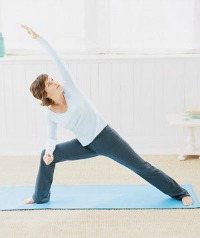Article by Jim Burke, July 2014
Yoga and Pilates are often thought of in the same category. As Physiotherapists we often get asked what the difference is between the two and why clients would choose one over the other. While there can be a lot of similarity between the two, there are also many differences. Between different settings there is also quite a difference in the way each is practiced, making the distinction even harder to explain concisely but let’s give it a go. Pilates v yoga
Pilates v yoga, Origins
Pilates is a relative newcomer and was developed by Joseph Pilates in the early 20th century. Initially the exercises were designed as a system of rehabilitation for bed ridden patients but quickly gained favour within the dance community by the mid 20th century as a fitness regime to build and maintain strength, flexibility and control.
Yoga originated in India more than 5000 years ago and has evolved over the years into different types of yoga such as Ashtanga, Bikram, and Vineyasa, each with a slightly different focus, speed and intensity of exercise.
Mind, Body and Spirituality
 Pilates is certainly a mind, body exercise and does require concentration, however focuses more on the physical. Pilates aims to get the brain to connect better with the muscular system in the body, improving core strength, muscle control, flexibility and tone.
Pilates is certainly a mind, body exercise and does require concentration, however focuses more on the physical. Pilates aims to get the brain to connect better with the muscular system in the body, improving core strength, muscle control, flexibility and tone.
Yoga has a deep philosophical and spiritual focus that differentiates it from the more workout based Pilates. Exploring spirituality is a huge part of yoga practice, especially through meditation, aiming at restoring the balance between body, mind and spirit to create total piece of mind.
Flexibility vs strength
Pilates classes do often involve stretch type movements but these tend to be more gentle than many of those in yoga. Pilates aims to exercise the whole body with a system of regimented movements focusing on aligning the spine and strengthening the core. Unlike yoga, there is a much larger focus in Pilates on your ‘neutral spine’ which is the position where each of the joints of the spine are in their mid position and under the least amount of strain. This is considered to be the safest position to load the spine. Many of the exercises focus on being able to maintain this ‘neutral spine’ position while movement of other joints occurs, or while a force or load is applied to the body.
In a yoga class you should work each muscle in the body equally, with each posture accompanied by a counter posture to create balance in your body. While core strength is definitely an important element to yoga, it is more a piece of yoga rather than the entire focus. Many of the postures involve relatively strong stretches at the end of the joint range.
Equipment
Pilates tends to be describes as either being matt or equipment classes. In a matt class there are a large range of exercises predominantly using body weight and small equipment such as exercise balls, foam rollers and rings. In a Pilates equipment class, many of the exercises are performed on a range of quite specialised equipment which use springs and pulleys to generate resistance. The amount of resistance can be varied between individuals and exercises as required.
In almost all cases, yoga requires only a matt to perform the exercises on and your own body. Exercises are done in a range of different positions on your back, stomach, hands and feet.
Injury
 Pilates tends to be a little safer for most injuries in the early stages, with a larger focus on quality, controlled movement and a bigger focus on neutral spine postures. There are still however exercises which are contra-indicated for certain injuries and your instructor needs to be made aware of these prior to commencing the exercises.
Pilates tends to be a little safer for most injuries in the early stages, with a larger focus on quality, controlled movement and a bigger focus on neutral spine postures. There are still however exercises which are contra-indicated for certain injuries and your instructor needs to be made aware of these prior to commencing the exercises.
While yoga can be very helpful for many injuries, because the exercises are often a little heavier and are more commonly performed at the limit of the joints movement, where they are more susceptible to injury, checking with your physio whether this type of exercise is OK for the issues that you may have is important.
Pilates v yoga, which is for me?
Both Pilates and yoga have benefits in improving flexibility, core and overall strength. Pilates with its focus on core muscle recruitment, movement control and neutral spine postures is a little safer in the early stages after an injury. If you are stiff and tight and just looking for a good strong loosening up or looking to incorporate more of a spiritual, stress relieving aspect to your exercise, then yoga may be the choice for you. If you focus is on getting stronger, improving your core, toning and improving your movement patterns, then Pilates is more what you are looking for.
We are currently offering a range of Pilates classes over the week. Follow this link for more information or to view the timetable. Alternatively call the practice on 9976 3290 to speak with one of our friendly staff or physiotherapists.
